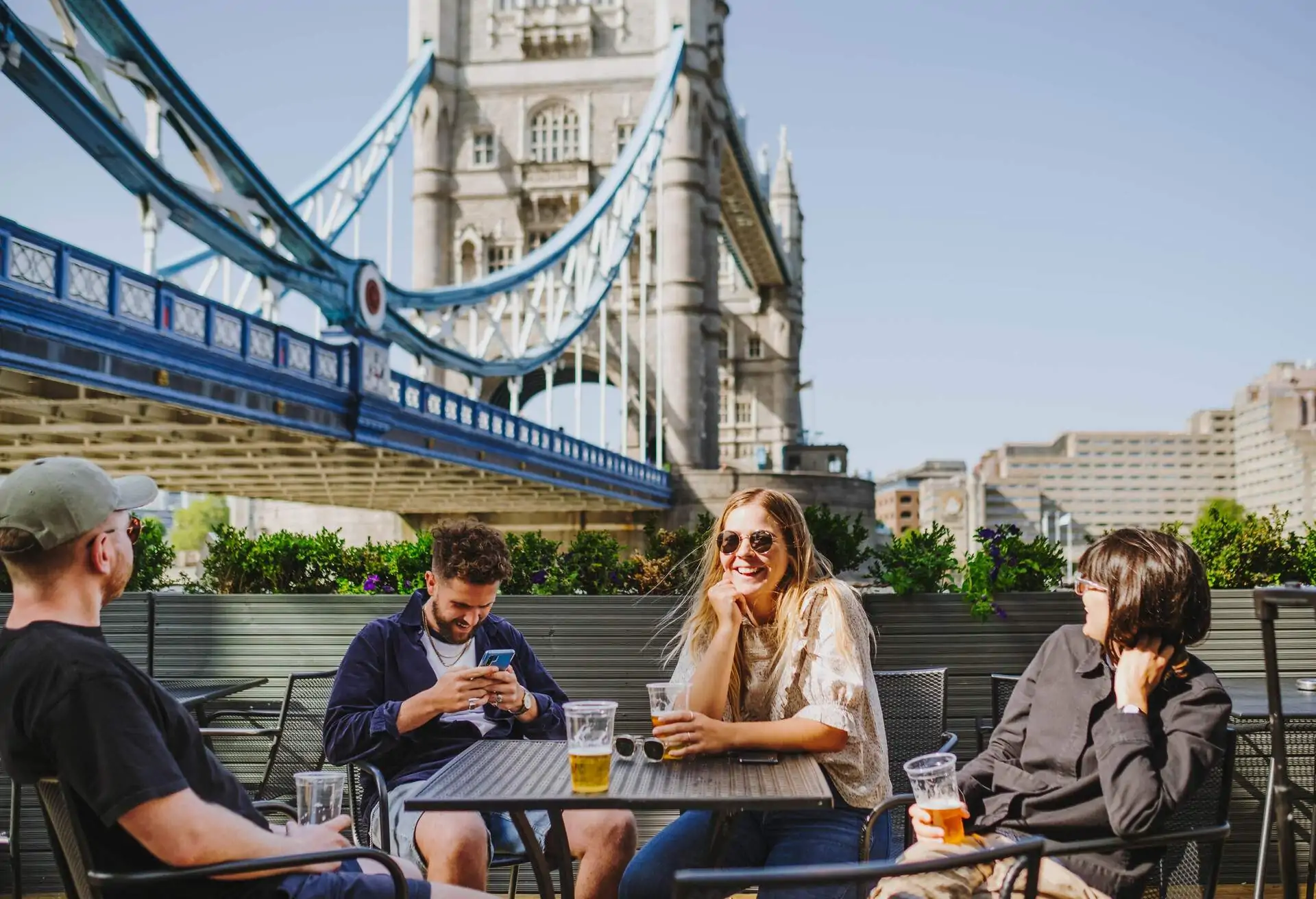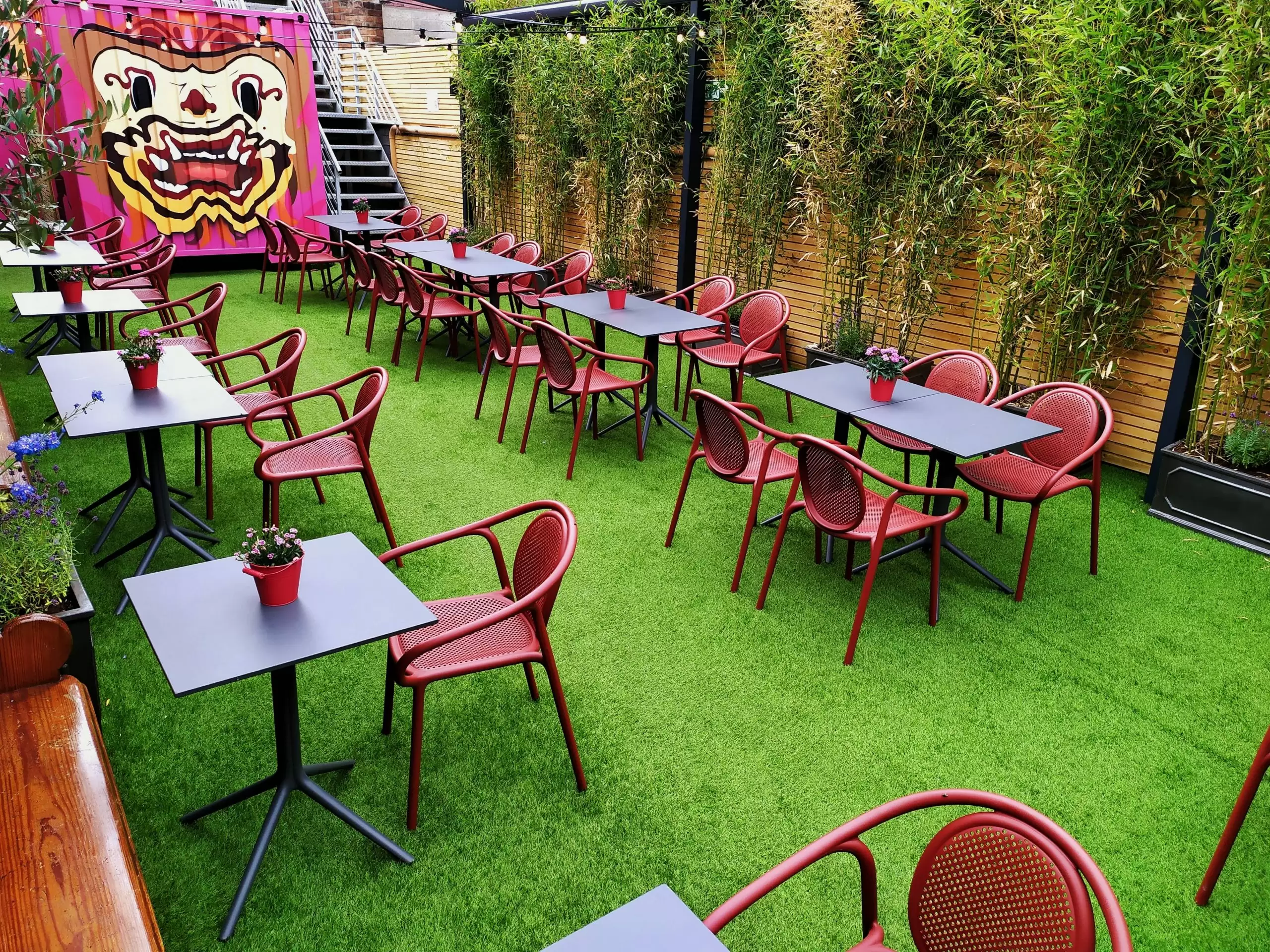Your restaurant has the potential to become a highlight of any traveller’s journey. There are clear opportunities to attract new diners from around the world, whether you’re a local neighbourhood spot, restaurant chain or something in between. And understanding current trends can help you create experiences that resonate with visitors seeking something local on their travels.
From Instagram-worthy presentations to hidden gems, tourists are eager to discover what makes your spot special. Here, we explore how to harness these trends and bring diners from far and wide to your tables.
Quick links
- The changing face of tourism
- Crafting your narrative
- Seasonal strategies
- Crafting unforgettable experiences
- Navigating cultural sensitivities
- Measuring success and adapting strategies
- Sustainability is a draw for conscious travellers
- Staying ahead of the curve with emerging trends in tourism dining
The changing face of tourism
Gone are the days when tourists solely sought out major landmarks and the big-hitter restaurants. Today’s travellers are more curious, experience-driven and may even plan their trips around food.
They’re looking for:
- Authenticity: Dishes that tell a story about local culture and traditions
- Sustainability: Restaurants with eco-friendly practices and locally sourced ingredients
- Instagrammable moments: Unique presentations or settings that beg to be shared
- Personalisation: Customisable menus or chef’s table experiences
- Technology integration: They want to be able to book a restaurant with minimum fuss
Knowing these evolving preferences helps you position your restaurant as a must-visit destination. By aligning what you offer with what modern tourists seek, you’ll be well on your way to attracting more diners while creating advocates who’ll spread the word about your venue long after their trip ends.
Creating your narrative
Your restaurant is potentially a chapter in a traveller’s story. To entice tourists, you need to tell a compelling tale that resonates with their desires for authentic experiences.
Start with your roots. What inspired your menu? Perhaps it’s a generations-old family recipe or a modern twist on local traditions. Share this story on your website and in your menu descriptions.
Consider your setting. Whether you’re nestled in a historic building or boast a rooftop view of the city, your ambiance is part of the draw. Highlight these unique features in your marketing.
Don’t forget the details that make dining memorable. It could be the artisanal pottery you serve your dishes on or the local musician who plays on weekends. Each element adds depth to your restaurant’s story and gives tourists more reasons to choose your spot.
Remember that every aspect of your restaurant contributes to the narrative that will captivate visitors and keep them coming back for more.
Seasonal strategies
Tourism ebbs and flows with the seasons, and smart restaurateurs adapt their approach accordingly. Here’s how to make the most of each period:
Peak season:
- Streamline your menu to handle higher volume
- Extend hours if possible to capture early birds and night owls
- Train staff on local attractions to enhance guest experiences
Shoulder season:
- Launch special events or themed dinners to draw in visitors
- Collaborate with local hotels on package deals
- Refresh your menu with seasonal ingredients
Off-season:
- Focus on locals with loyalty programs or resident discounts
- Use downtime for staff training and menu development
- Plan marketing campaigns for the upcoming peak season
Tailoring your strategy to the rhythms of tourism helps increase the chance of maximising revenue year-round and build a resilient business that thrives in every season.
Crafting unforgettable experiences
It’s not enough to simply serve good food. Travellers seek immersive experiences that engage all their senses and create lasting memories. This is where you can set your restaurant apart.
Beyond the plate
Consider how you can extend the dining experience beyond just the meal itself. Could you offer cooking classes where guests learn to make your signature dishes? Or perhaps guided tastings of local wines or spirits that complement your menu? These add-ons not only provide additional revenue streams but also give tourists a deeper connection to your cuisine and culture.
Storytelling through service
Train your staff to be storytellers as well as servers. They should be able to share the history behind certain dishes, explain the sourcing of ingredients or recount interesting anecdotes about the restaurant or local area. This personal touch can transform a meal into a narrative experience that resonates with visitors long after they’ve returned home.
Work with influencers
Consider using influencers to spark wanderlust for your restaurant, especially ones with global travel followings. When an influencer with over 15,000 followers shares content enjoying your venue’s hospitality, it can make their audience crave that same experience. Imagine the reach of coordinating multiple on-brand influencers with similar audiences to promote your restaurant. It’s an effective modern strategy delivering impactful results by directly inspiring tourists and driving demand before they even arrive.
Create Instagrammable moments
While it’s important not to prioritise style over substance, there’s no denying the power of social media in tourism. Look for ways to create visually striking elements in your restaurant, whether it’s through innovative plating, unique decor or interactive dining experiences. A single viral post can put your restaurant on the map for countless potential visitors.
Embrace technology
Consider how technology can enhance the dining experience without overshadowing the human element. Digital menus with wine pairing suggestions, augmented reality experiences that bring your dishes to life or even simple QR codes that link to information on ingredients can add an extra layer of engagement for tech-savvy tourists.
Take part in food events
Get involved with local food festivals, tours, tastings, workshops and any events attracting tourists. Linking your restaurant with these tourism activities exposes you to motivated visitors seeking authentic dining experiences.
Navigating cultural sensitivities
As your restaurant welcomes diners from around the globe, it’s important to navigate the diverse cultural landscape with skill and respect. This doesn’t mean completely altering your concept, but rather being mindful and adaptable.
Understanding dietary restrictions is a good starting point. Offering clear information about ingredients and preparation methods can make a world of difference to guests with religious or cultural dietary needs. Consider having options that cater to common requirements, such as halal, kosher or vegetarian dishes.
Language can be another barrier. While it’s not feasible to have menus in every language, having staff who can communicate in common tourist languages or using visual menus can greatly enhance the dining experience for international visitors.
Be aware of cultural etiquette differences. What’s considered polite service in one culture might be perceived differently in another. Train your staff to be observant and flexible in their approach to service.
The goal is to make every guest feel welcome and comfortable, regardless of their background. Show cultural awareness and adaptability, and you’ll not only avoid potential missteps but also create an inclusive environment that tourists will appreciate and remember.

Measuring success and adapting strategies
To guarantee your efforts in attracting tourists are paying off, track key metrics and adjust your approach accordingly. Here’s how to measure your success and refine your strategies:
- Monitor reservation patterns:
- If possible, track the percentage of bookings from out-of-town guests
- Identify peak times for tourist visits
- Note any correlations with local events or seasons
- Analyse sales data:
- Compare revenue during tourist seasons vs. off-seasons
- Evaluate the performance of tourist-oriented menu items or specials
- Assess the impact of partnerships with hotels or tour operators
- Gather feedback:
- Encourage guests to leave reviews on platforms popular with travellers
- Conduct brief surveys to understand how tourists found your restaurant
- Pay attention to comments about the overall experience, not just the food
- Track social media engagement:
- Monitor mentions and tags from tourist diners
- Analyse the reach and engagement of any created tourism-focused content
- Identify which types of posts resonate most with travellers
Use these insights to refine your approach. Perhaps you’ll discover that certain dishes are particularly popular with tourists, or that partnering with specific tour operators yields more covers. The tourism landscape is always evolving, and your strategies should evolve with it.
Sustainability is a draw for conscious travellers
In recent years, sustainability has moved from a niche concern to a major factor in travel decisions. Environmentally conscious tourists are increasingly seeking out restaurants that align with their values, making sustainability not just an ethical choice, but a smart business move as well.
Start by examining your supply chain. Sourcing ingredients locally not only reduces your carbon footprint but also provides a unique selling point for tourists interested in authentic, regional cuisine. Highlight these local partnerships on your menu and train your staff to share the stories behind your ingredients.
Consider your waste management practices. Implementing comprehensive recycling and composting programs can significantly reduce your environmental impact. Some restaurants have even adopted zero-waste policies, turning what was once considered trash into treasure – think citrus peels transformed into cocktail garnishes or vegetable scraps repurposed into flavorful broths.
Energy efficiency is another area where you can make impactful changes. LED lighting, energy-efficient appliances, and smart thermostats not only reduce your carbon footprint but can also lead to substantial cost savings in the long run.
Don’t be shy about communicating your sustainability efforts to your guests. Many tourists are actively looking for eco-friendly dining options and will appreciate knowing about your initiatives. However, be sure to avoid ‘greenwashing’ – only promote genuine, substantive efforts. Embracing sustainability is an ongoing journey. Start with manageable changes and gradually expand your efforts. Your commitment to sustainability can become a key part of your restaurant’s story, attracting conscious travellers and potentially opening up new partnership opportunities with eco-focused tour operators and accommodations.
Staying ahead of the curve with emerging trends in tourism dining
Innovation is one way to stand out from the crowd. Here’s how you can raise the bar by embracing trends in the hospitality industry.
Virtual reality experiences
As technology evolves and becomes much cheaper, some restaurants are experimenting with virtual reality to enhance the dining experience. Imagine guests putting on VR headsets to visually “travel” to the vineyards where their wine was produced or to see the fishing boats that caught their seafood. While still niche, this technology offers exciting possibilities for immersive storytelling.
One restaurant already doing this is Aria Restaurant in the Hyatt Regency Birmingham. Le Petit Chef is an “animated dining” experience that features a tiny animated chef projected onto your table, ready to guide diners through their experience. It combines the elements of storytelling and visual effects to create an immersive and entertaining meal.
Hyper-local and foraged ingredients
The farm-to-table movement is evolving into forest-to-fork. Restaurants are partnering with local foragers or even employing in-house foragers to source unique, hyper-local ingredients. This trend appeals to tourists seeking authentic, place-based culinary experiences.
Pop-up collaborations
Temporary collaborations between local chefs and international culinary stars are becoming increasingly popular. These pop-up events create a sense of exclusivity and urgency that can drive tourist bookings, especially among foodie travellers.
Health and wellness focus
With the rise of health-conscious travel, many tourists are seeking out restaurants that cater to specific dietary needs or offer nutrient-dense, “clean” eating options. Consider how you might incorporate this trend without compromising your identity.
Keeping an eye on these emerging trends allows you to position your restaurant at the forefront of tourism dining, attracting curious and adventurous travellers eager for novel experiences.
Take advantage of online platforms
One of the most effective ways to get your restaurant in front of tourists is by promoting yourself on a global platform. With a presence in over 80 countries, OpenTable attracts millions of diners every month, including a huge segment of travellers actively searching for restaurants during their trips.
Summary: Holiday time
Your restaurant has the potential to become a memorable part of every tourist’s holiday. By understanding evolving trends, crafting unique experiences and staying true to your identity, you can attract diverse diners from around the world. Embrace these strategies to turn your venue into a must-visit destination that keeps travellers coming back for more.




